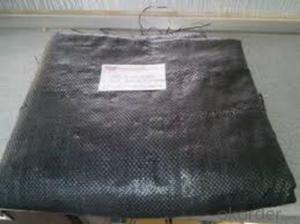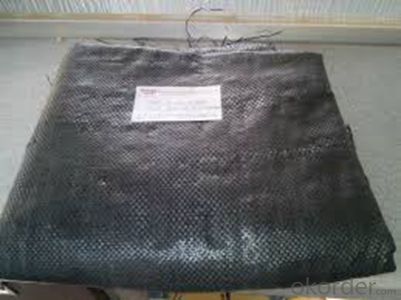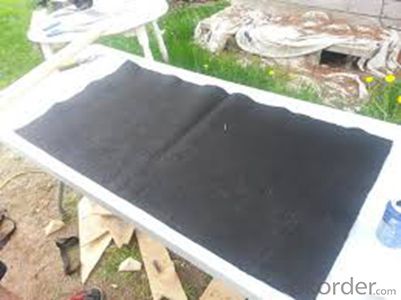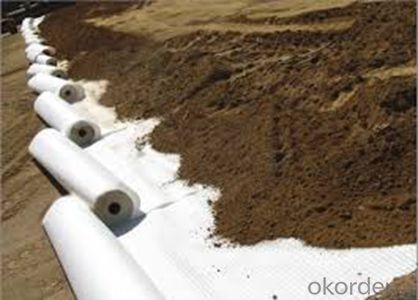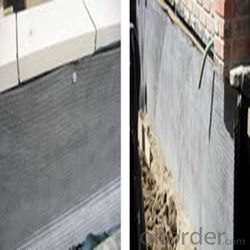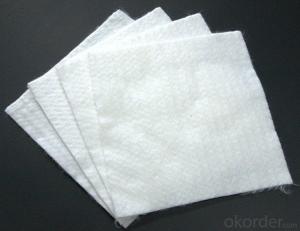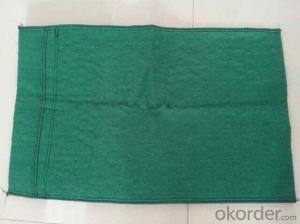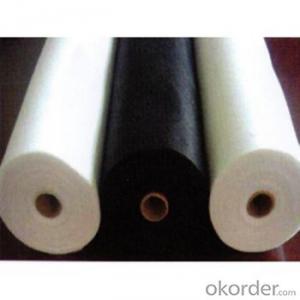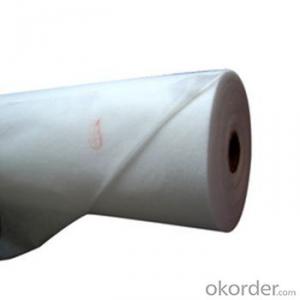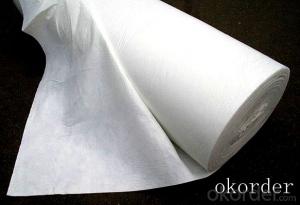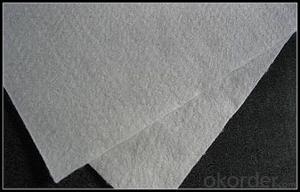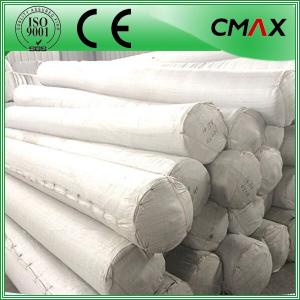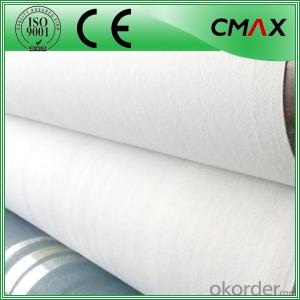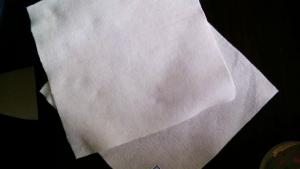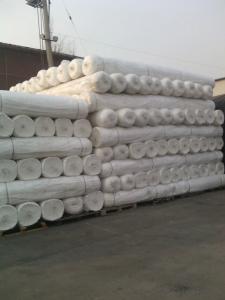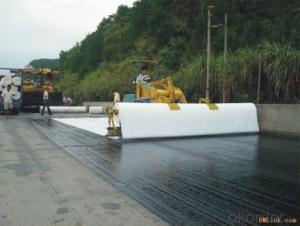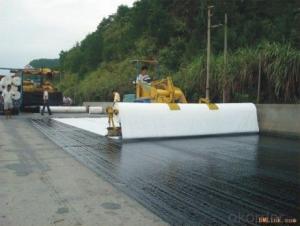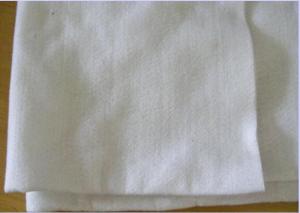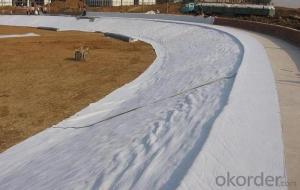Fiberglass Nonwoven Geotextile Fabric Price for Highway/Railway 500g/m2
- Loading Port:
- China main port
- Payment Terms:
- TT OR LC
- Min Order Qty:
- 4000 m²
- Supply Capability:
- 100000 m²/month
OKorder Service Pledge
OKorder Financial Service
You Might Also Like
Specification
Introduce
Filament spunbond needle punched geotextile is made by polyester filament, featured with good physical property, high tensile, resisting tearing,bursting,stabbing,etc.It boasts excellent drainage,separation,filtration,protection performance.
Products Features
1.Abrasion resistance,flexibility
2.Safe and easy for construction
3.Excellent drainage performance
4.High strength, anti-aging,anti-acid and alkali
Application Range
Paved roads
Unpaved / site access / farm roads
Land development for industrial and housing estates
Revetment and rip-rap filtration
Filter for gabions
Road embankment
Railway formation
Land reclamation
Storage and container yards
Parking area
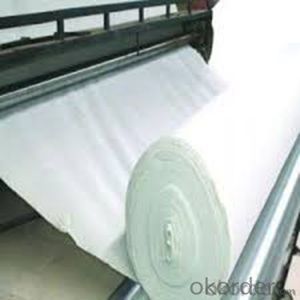
geotextile fabric
permeability,filtration,easy for construction
ISO and CE certificate
Good quality and competitive price
Packaging & Shipping
Packing: PLASTIC FILM INSIDE, AND WOVEN BAG OUTSIDE
Shipping: About 15 days after receipt the deposit
Our Service
Quality assurance
1.On a regular basis or as per your request,we entrust national testing agencies to conduct quality inspections
2. Strictly in accordance with the ISO9001-2008 international quality system standard,we monitor and manage the whole process throughout production,quality testing,and measurement to ensure product quality
3. For quality-related construction delay or substandard construction(except for damage or losses due to customer’s responsibility or irresistible natural disasters),we have refunding,replacement,and repair services.We will respond to customers’ feedbacks on quality issues within 24 hours.
FAQ:
Q: What kind of payments does jenor support?
A: T/T, L/C, Cash are accepted.
Q: Do you charge for the samples?
A: Accordeing to our company policy, the samples are free, we only charge the freight fee. And we will return the freight fee during the next order.
Q: Can you produce according to customers' design?
A: Sure, we are professional manufacturer, OEM and ODM are both welcome.
Q: Do you have other products?
A: Yes, please check the pictures:
- Q: Can geotextiles be used for separation of different soil layers?
- Yes, geotextiles can be used for the separation of different soil layers. Geotextiles are commonly used in civil engineering and construction projects to create a barrier between different soil types or layers. They help prevent the mixing and migration of soil particles, improving the overall stability and performance of the soil structure.
- Q: How is this set of water quotas? More
- Specializing in the production of geotechnical materials
- Q: Geotextile and geogrid the same do
- Not the same, this is two kinds of products, my user name professional manufacturer phone! The The
- Q: How do geotextiles affect water quality?
- Geotextiles can have both positive and negative impacts on water quality. On the positive side, geotextiles can act as a filtration system by preventing sediment and other pollutants from entering water bodies. They can also promote water infiltration and reduce erosion, thus helping to maintain water quality. However, if not properly installed or maintained, geotextiles can become clogged with sediment or create barriers that disrupt natural water flow, leading to potential water quality issues. Therefore, it is crucial to consider the specific design, installation, and maintenance requirements of geotextiles to ensure their positive impact on water quality.
- Q: What is the geotextile customs code?
- Hello: I can only give an example: if you ask the goods belong to the weight per square meter of more than 150 grams of non-woven weaving, can be returned, because you do not have a detailed description of the source of raw materials, production processes, Into the product code under 5603.1410. If you are satisfied with my answer, I would like to be accepted and given praise, thank you!
- Q: what is the purpose of geotextile on gabion walls.?
- Geotextiles are fabrics associated with soil, earth or rocks. Gabions were earth filled barricades meant to halt enemy fire during battle. I'm guessing geotextiles on gabion walls more effectively hold back the earth or filler. They might have well suited permeability or retentive qualities for gabions. There are a few other definitions for gabions. But this is the militaristic definition. Gabions are also used in dams and such. In this case, geotxtiles might have good properties for being submerged in water and still retaining whats inside the gabions.
- Q: It is best to take a picture
- Paved on the line, lap welding or with glue. The company specializes in producing geothermal geotextile, detailed advice, please see my information
- Q: Geotextile price is how much money
- Ask the geotextile price is too general, because the standard too much. Short wire, filament, polyester; non-standard, GB and so on. To Hongxiang Li Qian short wire geotextile price quote, for example, the price is generally between 4900-7500 yuan / ton, but the weight <200g, an increase of 100 yuan / ton; weight> 800g, an increase of 500 yuan /Ton. 187 & lt; 6600 & lt; 5604
- Q: Engineering geotextile non-woven fabrics where the cheapest can buy, where the wholesale market?
- Manufacturers need to add 8720 -
- Q: How about the geotextile pond
- You said to cover the fish pond, I understand is to build the bottom of the fish pond, but the use is not geotextile, but the composite geomembrane, the film is generally two layers of geotextile in the middle of a layer of geomembrane, , And geomembrane on both sides of the geotextile can prevent the bottom of the sharp objects pierced the geomembrane.
Send your message to us
Fiberglass Nonwoven Geotextile Fabric Price for Highway/Railway 500g/m2
- Loading Port:
- China main port
- Payment Terms:
- TT OR LC
- Min Order Qty:
- 4000 m²
- Supply Capability:
- 100000 m²/month
OKorder Service Pledge
OKorder Financial Service
Similar products
Hot products
Hot Searches
Related keywords
